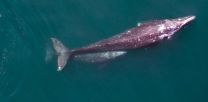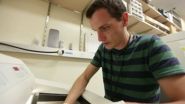(Press-News.org) SALT LAKE CITY, Utah, May 29, 2015 - Myriad Genetics, Inc. (NASDAQ: MYGN) today announced it will highlight several new clinical studies on its myRisk Hereditary Cancer molecular diagnostic test at the 2015 American Society of Clinical Oncology annual meeting being held in Chicago, Ill.
The myRisk Hereditary Cancer test assesses 25 genes for mutations associated with eight hereditary cancers. Finding deleterious mutations in these genes can help patients with cancer receive appropriate medical care and reduce the risk of second cancers, while patients without cancer can take steps in consultation with their healthcare provider to lower their risk of developing cancer.
"Myriad is pioneering a new era of cancer treatment and prevention. The myRisk Hereditary Cancer test has the potential to reduce the burden of hereditary cancer in the lives of women and men for generations to come," said Richard Wenstrup, M.D., chief medical officer, Myriad. "myRisk represents a significant new opportunity to help physicians tailor treatment to individuals based on their genetic results as well as their personal and family history of cancer."
Below are the key myRisk Hereditary Cancer presentations being highlighted at #ASCO15.
BREAST CANCER
Podium Presentation S100BC: Predisposing Germline Mutations in High Grade ER+HER2- Breast Cancer Patients Diagnosed END
Myriad presents new myRisk hereditary cancer data at 2015 ASCO Annual Meeting
Myriad myRisk finds >60 percent more mutations than BRCA1/2 testing in multiple studies
2015-05-29
ELSE PRESS RELEASES FROM THIS DATE:
Sharp-eyed Alma spots a flare on famous red giant star
2015-05-29
Super-sharp observations with the telescope Alma have revealed what seems to be a gigantic flare on the surface of Mira, one of the closest and most famous red giant stars in the sky. Activity like this in red giants - similar to what we see in the Sun - comes as a surprise to astronomers. The discovery could help explain how winds from giant stars make their contribution to our galaxy's ecosystem.
New observations with Alma have given astronomers their sharpest ever view of the famous double star Mira. The images clearly show the two stars in the system, Mira A and ...
Brain training induces lasting brain & mental health gains for veterans, civilians with brain injury
2015-05-28
In the first study of its kind, veterans and civilians with traumatic brain injury showed improved cognitive performance and psychological and neural health following strategy-based cognitive training. The Department of Defense-funded study, published this week in Neuropsychological Rehabilitation, was conducted by an interdisciplinary team of cognitive neuroscientists, rehabilitation specialists, and neuroimaging experts from the Center for BrainHealth at The University of Texas at Dallas.
"Veterans and others who have sustained traumatic brain injuries often experience ...
The new normal? Addressing gun violence in America
2015-05-28
Article Spotlight features summaries written in collaboration with authors of recently published articles by the Journals Program of the American Psychological Association. The articles are nominated by the editors as noteworthy to the scientific community.
Mass shootings have a significant impact on our individual and collective psyche, especially when they happen at schools. Despite the fact that children die every day from gun violence, school shootings upset us in ways that are difficult to comprehend. In our minds, schools serve as safe havens for children. When ...
Scientists use unmanned aerial vehicle to study gray whales from above
2015-05-28
One recent spring day, John Durban, a NOAA Fisheries marine mammal biologist, stood on the California coast and launched an unmanned aerial vehicle into the air. The hexacopter--so called because it has six helicopter-type rotors--zipped over the ocean and hovered above a gray whale mother and her calf. The pair was migrating north from their calving grounds off Baja California, Mexico, to their summer feeding grounds in the Arctic.
NOAA Fisheries scientists have stood at this point of land each year for the past 22 years, binoculars in hand, to estimate the number of ...
A new mechanism protecting the liver from dangerous inflammation
2015-05-28
Life-threatening liver inflammation can be caused by excess alcohol, fatty foods, toxins, as well as viral, bacterial, and parasite infections. A study published on May 28th in PLOS Pathogens reports that a specific immune cell type in the liver can dampen the immune response, reduce inflammation, and protect against liver damage.
Alain Beschin, from the Vrije Universiteit Brussel, Belgium, and colleagues studied the immune response to trypanosome parasites in mice, where they frequently cause liver inflammation and failure. They focused on the role of monocytes, immune ...
Deciphering dark and bright
2015-05-28
The human sensory systems contend with enormous diversity in the natural world. But it has been known for a long time the brain is adapted to exploit statistical regularities that nonetheless arise amongst this diversity. Research publishing this week in PLOS Computational Biology reports that established statistical distributions of visual features, such as visual contrast, spatial scale and depth, differ between dark and bright components of the natural world.
For scientists Emily Cooper and Anthony Norcia, gaining a more detailed description of statistical regularities ...
Researchers retrieve 'lost' memories
2015-05-28
Retrograde amnesia is the inability to recall established memories. In humans, amnesia is associated with traumatic brain injury, Alzheimer's disease, and other neurological conditions. Whether memories lost to amnesia are completely erased or merely unable to be recalled remains an open question. Now, in a finding that casts new light on the nature of memory, published in Science, researchers from the RIKEN-MIT Center for Neural Circuit Genetics demonstrated in mice that traces of old memories do remain in the amnestic brain, and that the cellular pathways underlying them ...
Genetically elevated triglyceride level associated with protection against type 2 diabetes
2015-05-28
Elevated plasma triglyceride level is considered a risk factor for type-2 diabetes, but new findings suggest that a genetically-elevated triglyceride level is associated with protection against type-2 diabetes. Yann Klimentidis, an Assistant Professor at the Mel and Enid Zuckerman College of Public Health at the University of Arizona, and colleagues found that triglyceride-increasing alleles are associated with decreased type-2 diabetes incidence. Their findings were published recently in PLOS Genetics.
Building on previous studies that hinted to the same association, ...
Understanding taste bud renewal may help cancer patients suffering from taste dysfunction
2015-05-28
Dany Gaillard and colleagues at the University of Colorado Anschutz Medical Campus have discovered a key molecular pathway that aids the renewal of taste buds, a finding that may help cancer patients suffering from an altered sense of taste during treatment. Their findings were published recently in the journal PLOS Genetics.
"Many cancer drugs which circulate throughout the entire body, will target a tumor but in the process affect healthy cells," said the study's senior author Linda Barlow, a professor of cell and developmental biology at University of Colorado Anschutz ...
CU Anschutz researchers discover key step in how taste buds regenerate
2015-05-28
AURORA, Colo. (May 28, 2015) - Researchers at the University of Colorado Anschutz Medical Campus have discovered a key molecular pathway that aids in the renewal of taste buds, a finding that may help cancer patients suffering from an altered sense of taste during treatment.
"Many cancer drugs, which circulate throughout the entire body, will target a tumor but in the process affect healthy cells," said the study's senior author Linda Barlow, PhD, professor of cell and developmental biology at CU Anschutz. "That in turn will alter a person's sense of taste leading to ...
LAST 30 PRESS RELEASES:
Jeonbuk National University researchers develop novel eco-friendly and photo-switchable smart adhesives
Magnetic ordering induces Jahn–Teller effect in spinel-type compounds
A mitochondrial protein may hold the secret to longevity, new study finds
Study shows how everyday repairs sustain autonomy in a Japanese squat
Ancient manatee relative reveals that sea cows have engineered the Arabian Gulf’s seagrass ecosystems for over 20 million years
Fecal tests reveal active termite attacks
Uterine fibroids linked to elevated heart disease risk
Dual use of cigarettes and vapes can reduce risks of smoking and help smokers quit
New bioelectronics device based on hydrogel- elastomer conductive nanomembranes
More yield through heterosis: IPK research team decodes gene interaction
James Webb telescope reveals spectacular atmospheric escape
ICE-CSIC leads a pioneering study on the feasibility of asteroid mining
Dramatic rise in young people using mental health services
Be careful trusting TikTok for gout advice
A study by the University of Seville links the vanishing of the specific heats at absolute zero with the principle of entropy increase
Anxiety and insomnia may lower natural killer cell count, potentially repressing immune function
How parasitic, asexual plants evolve and live
Research spotlight: A subset of patients with depression could benefit from anti-inflammatory treatment
New fully digital design paves the way for scalable probabilistic computing
Membrane electrode assembly design for high-efficiency anion exchange membrane water electrolysis
U.S. debt ceiling disputes show measurable impact on global crude oil markets
Climate extremes triggered rare coral disease and mass mortality on the Great Barrier Reef
Direct observation reveals “two-in-one” roles of plasma turbulence
Humans rank between meerkats and beavers in monogamy ‘league table’
US fossil reveals early mass-burial event and ancient microbial attack
Sedative choice could improve outcomes for breathing tube patients
New superconducting thin film for quantum computer chips
Simulations reveal protein "dynamin" constricts cell membranes by loosening its grip
Nearly 1 in 5 UK emergency department patients cared for in corridors/waiting rooms
Heavy energy drink intake may pose serious stroke risk, doctors warn
[Press-News.org] Myriad presents new myRisk hereditary cancer data at 2015 ASCO Annual MeetingMyriad myRisk finds >60 percent more mutations than BRCA1/2 testing in multiple studies


